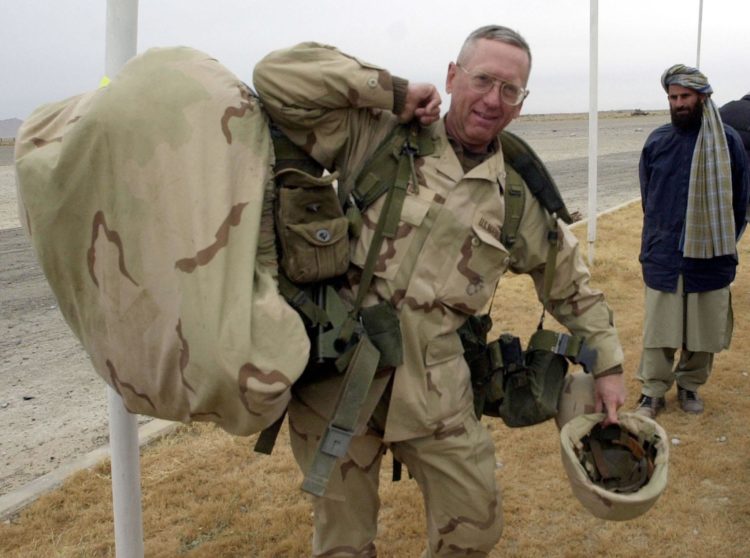Former Secretary of Defence General James Mattis’s no-nonsense approach to life is well-known. Before and during his tenure as SecDef, he pushed for more focus on warfighting and less emphasis on senseless exercises and training. Gauging by his time of military, and now public service, the Secretary of Defense appears to prefer logic, and not necessarily doctrine, in making decisions.
In doing so, he’s created a “Mattis Way of War.”
At least, so argues USMC Major Michael Valenti. And he’s put quite a lot of thought behind this assertion, as he wrote his Master’s thesis on General Mattis and his approach to combat. In the paper, Major Valenti examines Mattis’s time as commander of Task Force 58 in the initial stages of the Afghanistan campaign (our own Brandon Webb had some personal interactions with General Mattis during that time) and as commander of the 1st Marine Division during Operation Iraqi Freedom.
In both campaigns, Major Valenti identifies four key components that can be translated into a “Mattis Way of War:”
- The use of historical examples to influence strategical and tactical decisions.
- Properly communicating the commander’s intent to all ranks.
- A light and flexible command structure.
- The infusion of selected liaisons in key positions.
In interviews, General Mattis has emphasized the distinction between reading history and studying history. By just reading, you gain information; whereas by studying, you understand information. For example, a person can read a book or an article on the Vietnam War and get an idea of why America lost. But a person can also study a book on the Vietnam War and understand why America lost. A subtle line that can make the difference. War isn’t a quiz. Some prefer to understand a concept rather than simply memorize it.
Effectively communicating the commander’s intent is another point to highlight. Mattis wouldn’t issue concrete orders to his subordinate officers. He would, instead, say what he wished to achieve, and it was up to the officers to make it happen — juxtapose this approach with the macromanaging that often takes place in the military. In doing so, Mattis cultivated and encouraged an environment of intellectual and aggressive leadership the enemy found hard to oppose. His approach was similar to the German Army’s during WWII. Everyone hates micromanaging except the micromanagers.
The paper is available for study on Amazon or online. Major Valenti makes solid arguments that can prove useful not only on the battlefield but also in the boardroom or office.
Already have an account? Sign In
Two ways to continue to read this article.
Subscribe
$1.99
every 4 weeks
- Unlimited access to all articles
- Support independent journalism
- Ad-free reading experience
Subscribe Now
Recurring Monthly. Cancel Anytime.











COMMENTS
You must become a subscriber or login to view or post comments on this article.